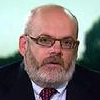The Federal Reserve on Wednesday left unchanged a key U.S. interest rate that influences the cost of borrowing for mortgages and all sorts of consumer and business loans, noting a recent decline in inflation even as the economy continues to grow “at a solid rate.”
In a unanimous vote, the Fed kept its benchmark interest rate in a range of 2.25% to 2.5%. Senior officials sounded more upbeat about the economy after a slow start in early 2019 and pointed to a recent decline in inflation as reasons to stand pat.
The government said last week GDP rose a surprisingly robust 3.2% in the first quarter. And on Monday, fresh data showed that core inflation as measured by the personal consumption expenditure price index fell to 1.6% in March — a 19-month low.
“I see us on a good path,” Fed Chairman Jerome Powell said in a press conference after the latest two-day meeting, at which senior central-bank officials evaluated the health of the economy.
See the Fed’s policy statement
The Fed acknowledged both overall and core inflation “have declined and are running below” the central bank’s 2% target, but Powell said there’s reason to believe the slackening in prices pressures is “transient.”
The Dow Jones Industrial Average DJIA, -0.61% and S&P 500 SPX, -0.75% ended the trading session lower, having turned down during Powell’s press conference. Investors viewed Powell’s comments on the temporary nature of the weakness of core inflation as hawkish.
In other words, the Fed took away hopes of an early rate cut as the central bank expects core inflation to creep up again soon, and sees no reason to alter its self-described “patient” approach to interest rates. The Fed signaled in March that it’s done raising interest rates this year — so long as inflation remains low.
“Stronger growth but weaker inflation equaled a still-patient Fed,” said economist Andrew Grantham of CIBC World Markets.
Powell also downplayed the weak ISM manufacturing index, which in April fell to its slowest pace since October 2016.
“We see that reading as, it’s still a positive reading and consistent with what we expect from the manufacturing sector, which is moderate or perhaps modest growth,” Powell said.
Read: Manufacturers grow at slowest pace in April since Trump elected, ISM finds
In a move important to Wall Street but of little consequence to Main Street, the Fed trimmed the interest rate it pays to banks that keep excess reserves at the central bank to 2.35% to 2.4%.
“This is a technical adjustment, meant to push the effective federal funds rate back toward the middle of the target range — not a change in the monetary policy stance,” said chief economist Scott Brown of Raymond James.
Investors aren’t fully convinced, though. Wall Street expects the Fed to cut rates by the end of the year, according to the CME Group’s FedWatch tool.
See: Live blog of Fed interest-rate decision and Powell press conference
The reduction in the rate on so-called excess reserves known as the IOER, meanwhile, is intended to foster trading in the fed funds market at rates well within the committee’s target range, the Fed said. Recently the effective federal funds rate has drifted again above the IOER rate.



